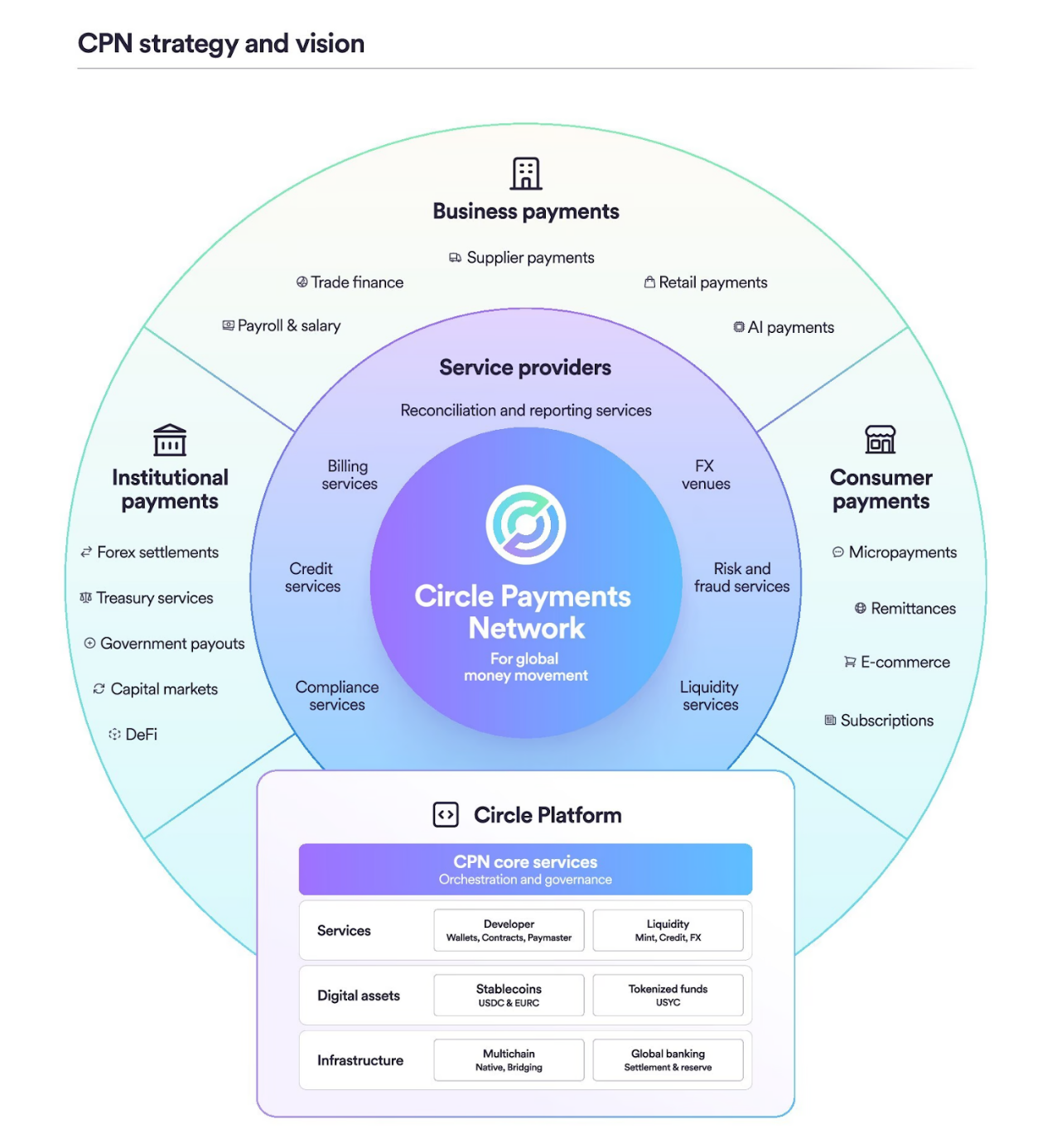New global currency flow standards? View Circle Cross-border Payment Network CPN in detail

Reprinted from panewslab
04/23/2025·26DComprehensive editor: Felix, PANews
USDC stablecoin issuer Circle said on April 21 that it is expected to launch the Circle Payments Network (CPN), a stablecoin-powered cross-border payment network, in May.
CPN aims to enable faster and lower-cost international remittances by leveraging stablecoins such as USDC, EURC and other regulated digital currencies to conduct 24/7 real-time settlement between participants such as banks, payment providers, virtual asset service providers and digital wallets.
The launch represents a strategic expansion of the role of Circle, from a stablecoin issuer to an infrastructure provider that transfers these assets at scale.
Build a framework to eliminate obstacles
According to World Bank data, the current settlement time of cross-border payments may still exceed one working day, and the cost exceeds 6%, which has had a certain impact on emerging markets and limits global competitiveness.
Although stablecoins have long been expected to become the new basis for Internet payments and capital flows, there are still many obstacles to the adoption of stablecoins in mainstream payments. These barriers include user introductory challenges, vague compliance requirements, technical complexity, and concerns about secure storage of digital cash.
CPN aims to remove these barriers. By integrating financial institutions into a compliant, seamless and programmable framework to coordinate global payments for fiat, USDC and other payment stablecoins. Business and individual customers of these financial institutions can enjoy a faster and lower payment experience than traditional payment systems. Financial institutions participating in the network must meet strict eligibility criteria including licensing, AML/CFT compliance, financial risk management, and cybersecurity protocols.
Vision and use cases

With CPN, Circle is building a new platform and network ecosystem that provides a wide range of cross-border capital flow use cases for enterprises, financial institutions and individuals, including supplier payments, remittances, payroll, capital market settlement, internal fund operations, and on-chain financial applications. in:
enterprise
Importers, exporters, merchants and large enterprises can use CPN-enabled financial institutions to eliminate major costs and frictions, strengthen global supply chains, optimize capital operations, and reduce reliance on costly borrowed working capital.
personal
Remiters and payees, content creators, and other individuals who tend to send or receive small payments will realize more value, and financial institutions using CPN will be able to provide these improved services faster, lower cost and simplify.
Builders
Banks, payment companies and other providers can leverage CPN's platform services to develop innovative payment use cases and build an ecosystem with the programmability of stablecoins, SDKs and smart contracts. Third-party developers and enterprises can introduce value-added services to further expand network functions.
Additionally, CPN is powered by smart contract infrastructure and modular APIs, enabling third-party developers to build advanced modules, application services, and automated financial workflows directly on CPN.
Meanwhile, to ensure that the CPN is built in compliance with high standards of trust and operational integrity, Santander, Deutsche Bank, Societe Generale and Standard Chartered are consulting on the design of the network as consultants.
CPN also has more than 20 design partners, including Alfred Pay, BCB Group, BVNK, CoinMENA, etc. This suggests that the platform will focus on institutions operating in emerging markets and bulk remittance channels.
Targeting payment giants
As stablecoins become increasingly popular around the world and regulatory frameworks are beginning to become unified, Circle has seen opportunities to modernize global currency circulation.
Circle's new platform aims to compete directly with established payment platforms such as Visa and Mastercard. Despite the growing influence and regulatory efforts of Circle, USDC's market share is still lagging behind rival Tether (USDT).
As of the second quarter of 2025, USDC had a market capitalization of US$60.17 billion, while USDT had a market capitalization of US$144.05 billion. Still, Circle is committed to increasing transparency, compliance and functionality to close the gap.
It is also worth mentioning that Circle is not the first company to try to completely change cross-border payments or replace SWIFT, but none of them have been successful yet. Whether Circle can break the curse in the future is worth looking forward to.
Related Readings: Circle IPO Interpretation: Growth Potential Behind Low Net Profit Rate

